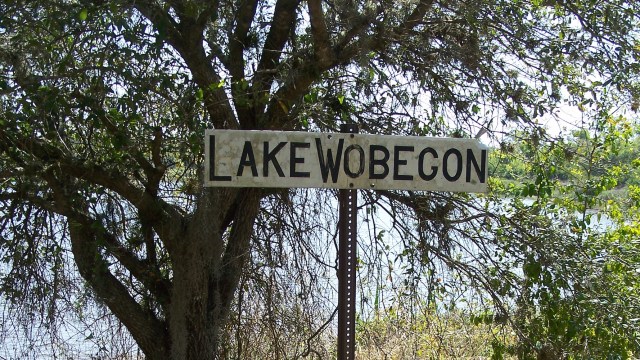Ask Ethan #64: What happens to matter as the Universe expands?
Radiation gets stretched to longer and longer wavelengths as space itself expands, but what happens to matter?
“The trees that are slow to grow bear the best fruit.” –Molière
It’s not only the end of the week and therefore time for another Ask Ethan, where we take a look through your questions and suggestions to base a column on, but it’s time to choose the first winner of our year-end contest! Thanks to Steve Cariddi, we have five copies of the 2015 Year In Space Calendar to offer to the lucky question-askers who get their topic selected for our column until the end of this year, and our first winner is Andrej Novak, who asks:
[The] Big Bang… says that as space-time is expanding, this is causing the light shift towards longer wavelengths. Does space-time expansion affect matter particles in any way? After all, matter particles have a finite size.
This is kind of an incredible question, when you think about it.

On the one hand, there’s an amazing story that started happening in our Universe about 13.8 billion years ago, and it continues even today. All the matter and energy in the Universe — in all its forms — was in a hot, dense state, and was expanding. It wasn’t expanding like the fragments of an explosion expand, but rather like baker’s dough that rises in the oven.
If you imagine every bit of matter as an atom in that bread, you can begin to understand how the expansion of the Universe works.
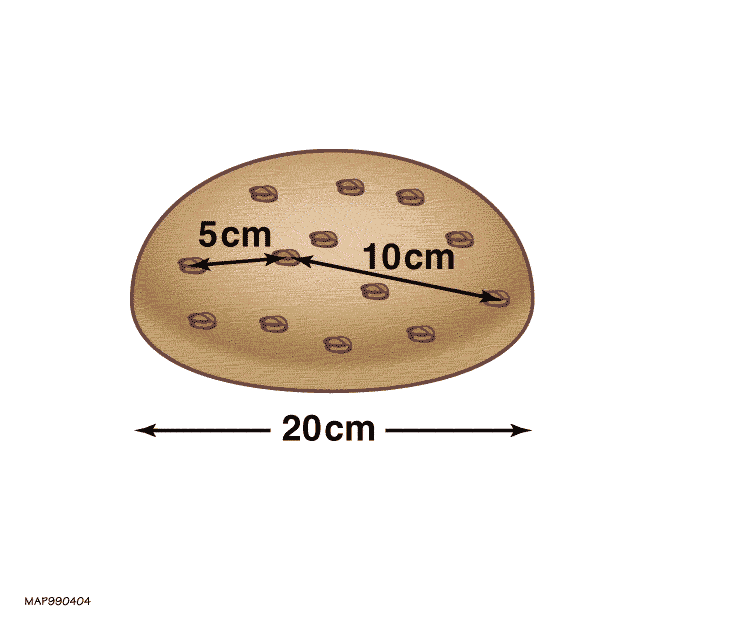
From the point of view of any single atom, all the other atoms appear to speed away from it, with the ones that start off farther away appearing to expand even faster than the nearer ones. This isn’t because any of the atoms are moving, or because distant atoms are moving faster than nearby ones, but rather because the space itself where the atoms live is expanding.
And if space itself expands, then the Universe gets to do a remarkable thing to everything residing in it.
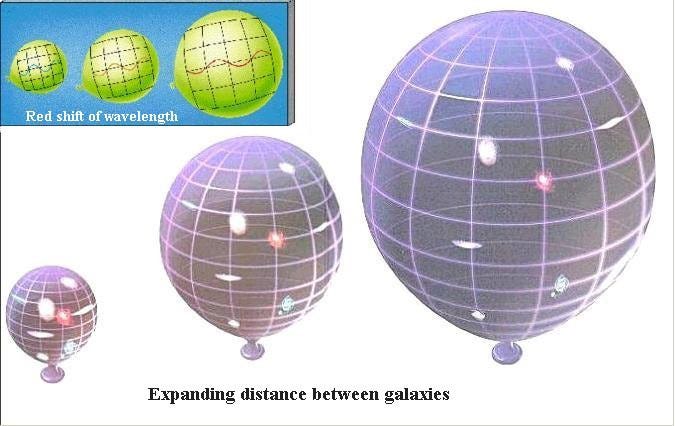
It cools everything down! For radiation, it’s easy to understand why. All radiation has a particular wavelength, and that wavelength is the property that defines its energy.
So what happens in the Universe when distances expand? Those wavelengths stretch, and the energies drop. This is what allows neutral atoms to form from a sea of ionized plasma: the electrons and nuclei that spontaneously form used to have photons blast them apart, but as the Universe cools, they no longer have sufficient energy to do so.
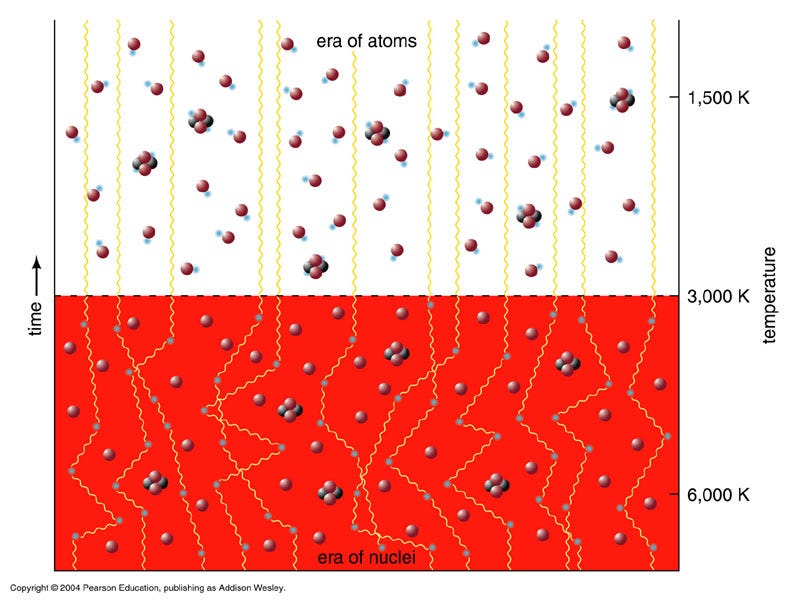
As a result, we wind up with neutral atoms, and tens-to-hundreds of millions of years later, they collapse into stars and galaxies. As the Universe continues to expand, the radiation continues to cool, as its wavelength continues to stretch. We’ve already gone to great lengths to explain why this happens for radiation.
But what about the matter? After all, this matter started out moving very quickly, too, and something needed to happen to cool it off, too, or it couldn’t have collapsed into stars and galaxies. Remember, for a molecular cloud to clump together and form stars, the gas needs to be cold, or it won’t work!
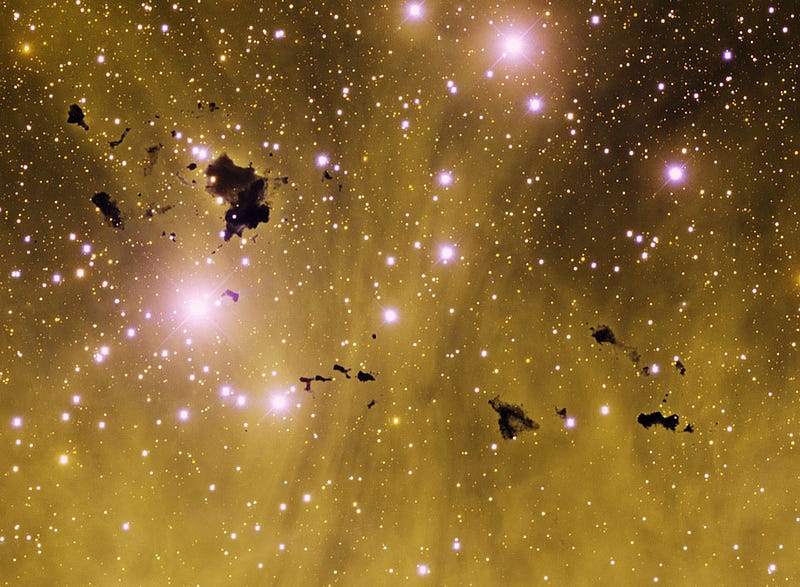
Moreover, for a galaxy to form at all, for matter to remain bound in either a spiral or an elliptical structure, the speed of the moving particles needs to be below the escape velocity of the galaxy. For most galaxies, that’s only a few hundred kilometers per second. And although that’s pretty fast, remember that early on, most atoms were moving at speeds of hundreds of thousands of kilometers per second!
And yet, stars and galaxies are abundant today.
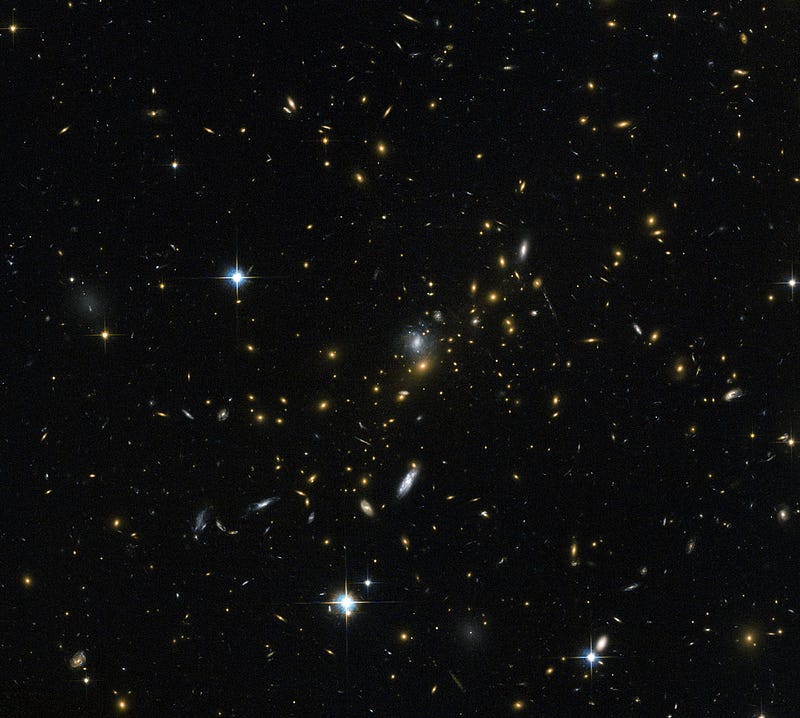
So what is it that happened to the matter? I want you to think about not just how wavelengths behave in an expanding Universe, but about what it means for particles that move at a certain speed. A speed, remember, is simply the distance that something moves over a given amount of time, just as a wavelength is the amount of distance between two successive crests of a wave. For a particle, speed serves a similar function to the one served by a wavelength for radiation: it’s a measure of the kinetic energy intrinsic to that system.
Radiation with higher energies (and shorter wavelengths) behave more like gamma rays and less like radio waves, while particles with higher speeds also have higher energies. This latter phenomenon is why hotter particles — with greater temperatures — also have greater speeds, and hence can do more physical work under the right conditions.
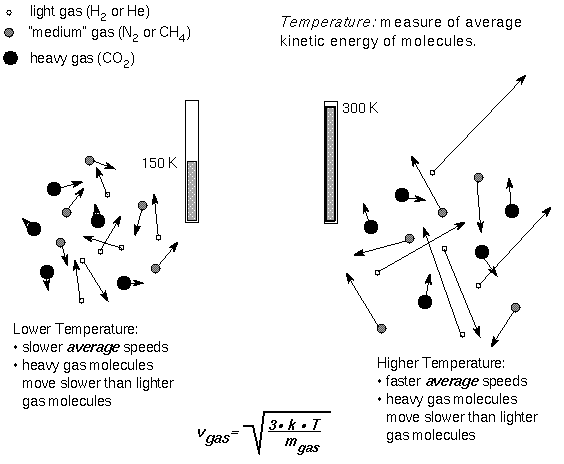
As your Universe expands, however, and the distances between objects increases, it isn’t just wavelengths that increase and hence, it isn’t just the energy of radiation that drops. Speed drops as well, and so the energy of particles decrease over time as well! Think about why this must be: let’s say you move at 100 km/s relative to a certain location, and the Universe is expanding at — and remember, the rate of expansion needs to be a speed per unit distance — 10 km/s per kiloparsec. (This is over 1,000 times faster than the rate of expansion today, but it could be a good example of the rate of expansion in the distant past. And for reference, a kiloparsec is a little over 3,000 light years.)
What happens after you’ve been traveling for, say, ten million years, which is the amount of time it takes an object traveling at 100 km/s to traverse about one kiloparsec?

You’re still moving at 100 km/s relative to your original location, but that’s now a kiloparsec away! It appears to be receding at 100 km/s from you still, but part of that — 10 km/s of it — is accounted for by the expansion of the Universe! So your speed relative to the expansion of the Universe has slowed down; now you’re only moving at 90 km/s. And as the Universe expands farther and farther, your velocity continues to drop.
So in an expanding Universe, radiation loses energy due to its wavelength redshifting, but matter with kinetic energy loses that energy thanks to the expansion of the Universe, too!

What’s even more interesting than this is to consider that when everything moves close to the speed of light, we can treat it as radiation, and when it moves much slower than the speed of light, we can treat it as matter. So early on, even particles like electrons and protons behaved as radiation, and at late times (like today), even neutrinos transitioned towards behaving as matter. In fact, there are some models out there that give a very small (but non-zero) rest mass to particles like the photon and the graviton. If the Universe keeps on expanding and cooling, and those particles actually turn out to be massive, eventually they’ll start to behave as matter, and cool, and — if dark energy hasn’t yet driven everything away into isolation — they’ll even begin to clump together, too!

So yes, Andrej, matter particles are affected by the expansion of the Universe: they cool and lose energy. Energy is proportional — for non-relativistic particles — to their velocity squared, so every time a particle’s kinetic energy is halved due to the Universe’s expansion, its speed will have decreased by about 29%. (Or approximately a factor of ~1/√2.) Particles like protons and neutrons become non-relativistic (and start behaving as matter) when the Universe is about a microsecond old; electrons when it’s about a second old; neutrinos when it’s tens of thousands of years old; and photons and gravitons, if they actually are massive, won’t get there until the Universe is at least quintillions of years old!
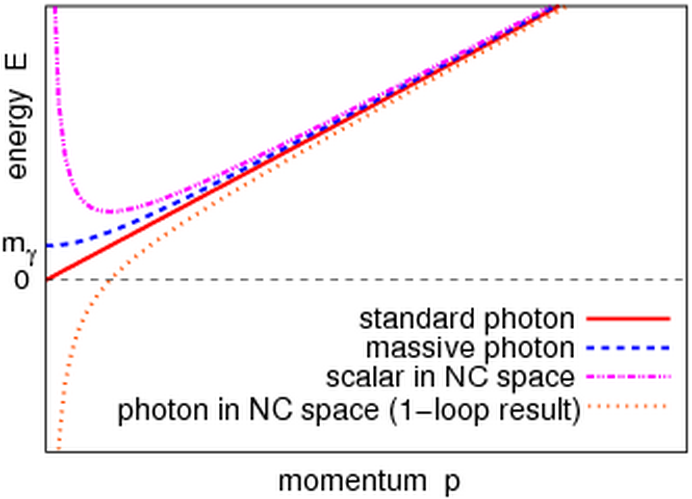
It took not only the radiation to drop in energy, but also the individual energies of the particles in the Universe to drop in kinetic energy to form the molecules, stars, galaxies and planets we see today. We’re awfully fortunate that the expansion of the Universe works the way it does, because it’s what we needed to give rise to the Universe we have today!

Thanks for a fantastic and fun question, Andrej, and I’ll be contacting you through your provided email address to claim your prize! If you have question or suggestion and want your chance to win, send in your entry (and email address) here, and the next Ask Ethan column — and a Year In Space 2015 Calendar — could be yours!
Leave your comments at the Starts With A Bang forum on Scienceblogs!





